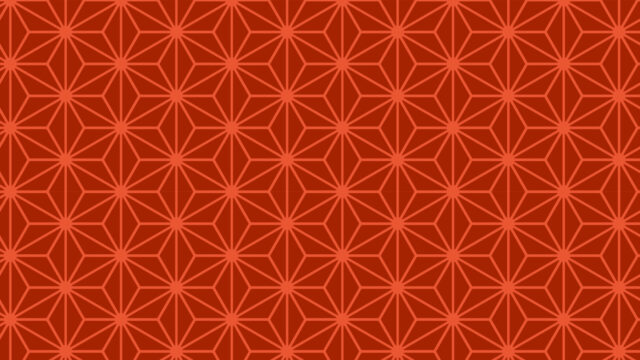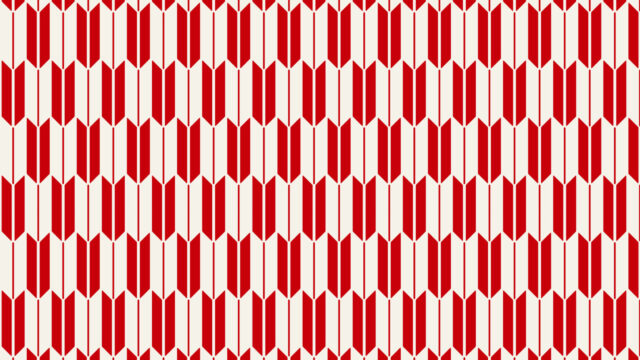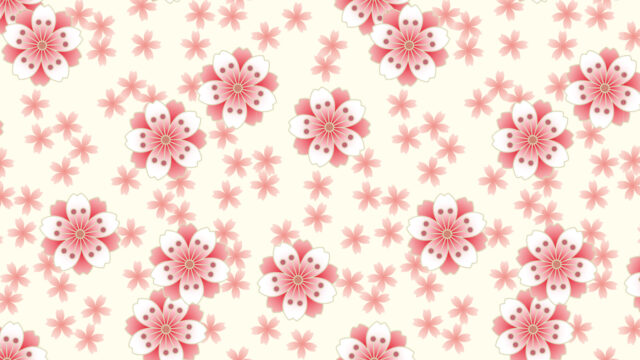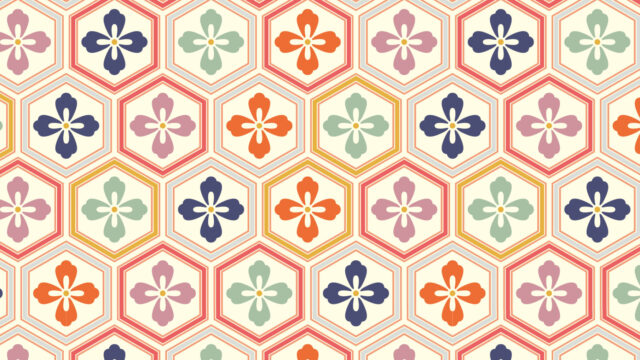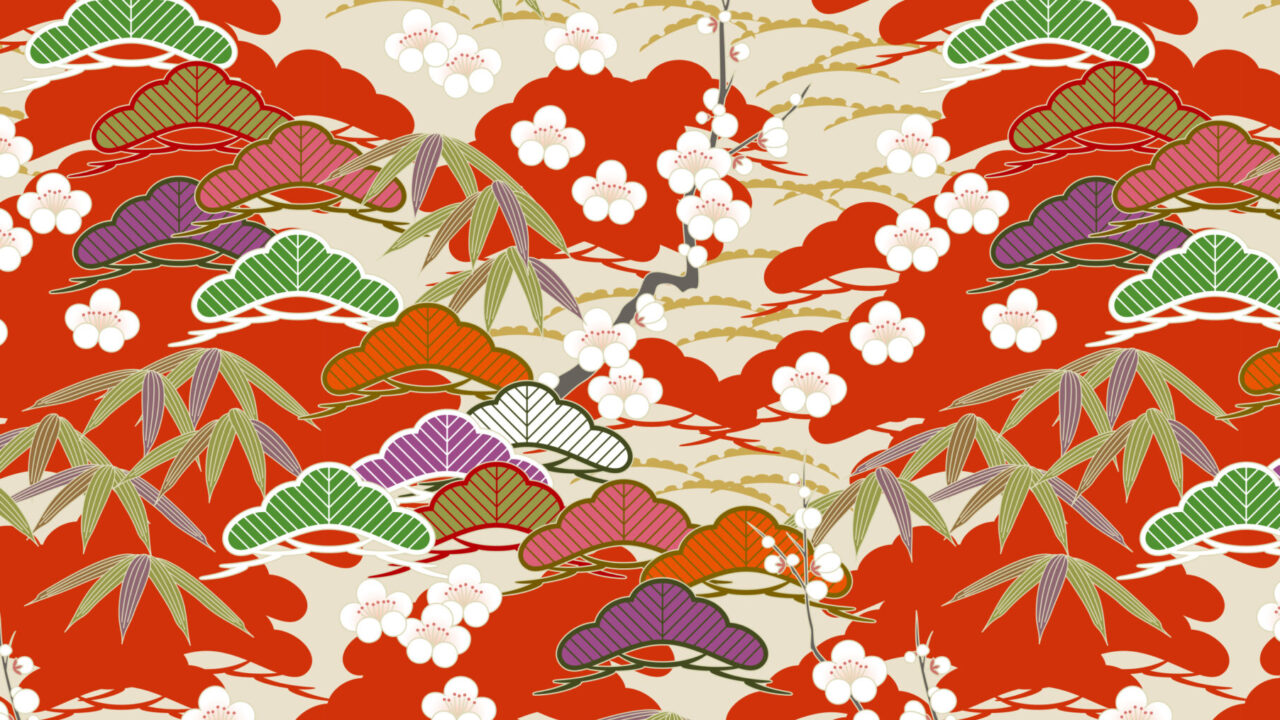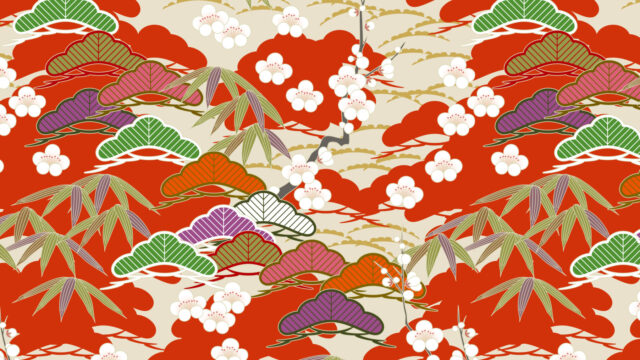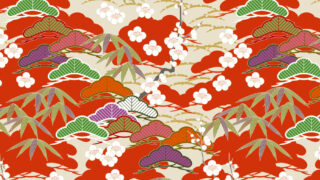足袋 Tabi
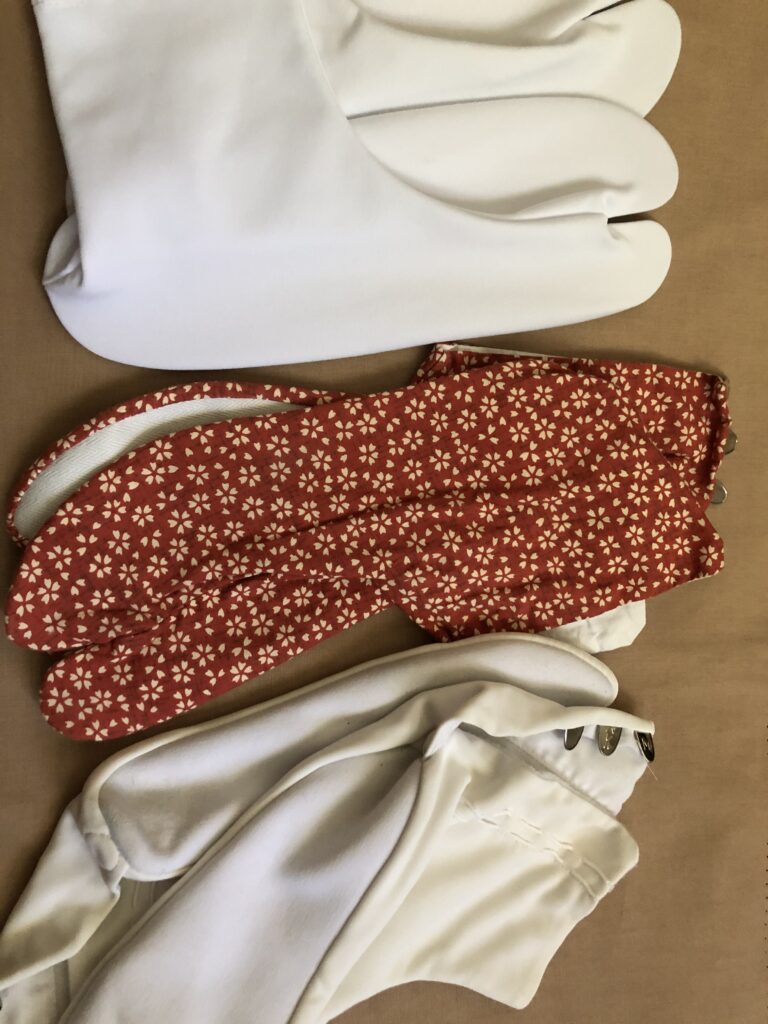
足袋
足袋は親指と他4本が入るように分かれているはきものです。小鉤(こはぜ)という留め具でしっかりと固定します。小鉤は4つのものと5つのものがあります。草履、下駄などはくとき使用します。
素材は、絹、綿、麻、ナイロンのものなどがあります。
絹
絹独特の光沢と肌触りです。花嫁さん花婿さんが使われます。
綿
織り方で肌触りや値段も変わります。
伝統的なキャラコは、薄手で織り目が細かい平織の布。お値段はおよそ1500円~
テトロンブロードは、ポリエステルと綿の糸を交織したものです。お値段はおよそ500円~
麻
サラッとした通気性の良い足袋です。夏に最適ですが、一年中使っても大丈夫です。お値段はおよそ1000円~
ナイロン
丈夫で長持ちです。しわになりにくい。ブロードではなく100パーセントポリエステルだと、子鉤なしのストレッチ素材が多いです。足袋としても使えますが、足袋カバーとしても使えます。お値段はおよそ300円~
※お値段は参考程度です。
白足袋のほかに、色足袋、柄足袋、レース足袋など様々種類があります。基本は礼装以外で使用します。
浴衣は素足というイメージも強いかと思いますが、麻やレースなどの足袋をはく方も多いです。素足が苦手な方、見せたくない方とかもいらっしゃると思います。
自分の体感を大切にして、楽しまれると良いと思います。
Tabi
The characteristics of tabi(足袋) is that the thumb and other finger are separated. The tabi (足袋) is securely fastened to the feel with a fastener called kohaze(こはぜ). The tabi(足袋)have 4 or 5 kohaze(こはぜ). The tabi(足袋)used when you wear geta(下駄) or zouri(草履).
Materials include silk, cotton, hemp, nylon, etc.
silk
It is silk’s unique gloss and texture. Especially the bride and groom wear it.
cotton
The texture and price very depending. Calico is thin and has a fine texture. Plain weave cloth. It costs about 1500 yen or more.
Tetron brood is a mixture weave of polyester and cotton threads. It costs about 500 yen or more.
Hemp
It is breathable. It is perfect for summer. You can use it all year round. It is costs about 1000 yen or more.
Nylon
It is durable and long-lasting. It doesn’t wrinkle easily. There are many stretch materials product without kohase(こはぜ). It can also be used as tabi(足袋)cover to keep tabi(足袋) from getting dirty out side. It costs about 300 yen or more.
※The price is just for reference.
In addition to white tabi(足袋), there are many kinds of tabi(足袋), colored tabi(足袋), pattern tabi(足袋), lace tabi(足袋) etc. They are basically not for formal wear.
Yukata has an image of bare feet, but some time , some people wear lace tabi(足袋)or hemp tabi(足袋).Some people don’t like bare feet or don’t want to show their bare feet.
Please cherish your senses and enjoy them.
足袋のはき方 How to wear tabi
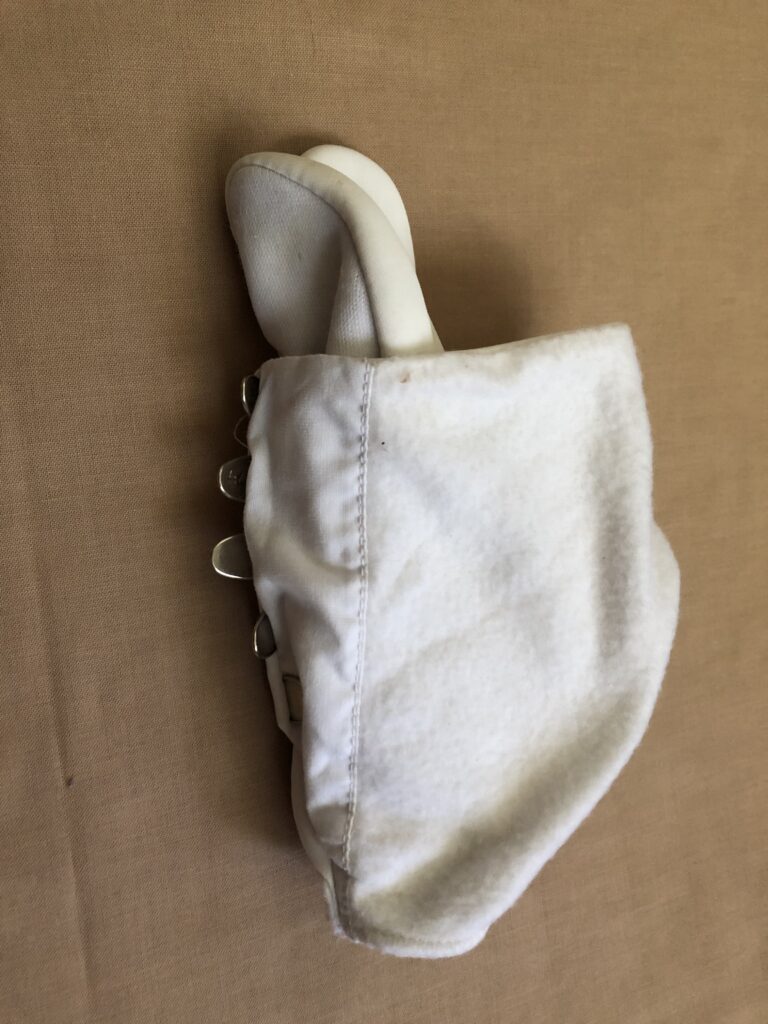
座ってはくにしても、立ってはくにしても、かがまないといけないので、着物をきるまえにはくと履きやすいです。内側が見えるように半分に折ってつま先がしっかり足袋の中に入るようにしましょう。子鉤は下からとめていきます。
When you wear tabi(足袋), your body bend, so please wear them before you put on your kimono. Fold your tabi(足袋) in half. And put your toes firmly in your tabi(足袋). Fasten the kohaze(こはぜ)from the bottom.
肌襦袢、裾よけ hadajyuban, susoyoke
肌襦袢、裾よけ
肌襦袢
長襦袢の下に着ます。ガーゼやさらしでできていて、吸湿性がよいもの。合わせた前をおさえる為の紐が付いてるものと付いてないものがあります。
裾除け
長襦袢の下に着ます。裾さばきが良いもの、静電気がおこらないもので、絹、ポリエステル、綿などあります。
肌襦袢のみはおよそ800円ぐらい~
裾よけのみ(綿)およそ1500円ぐらい~
裾よけのみ(ポリエステル)およそ1000円ぐらい~
裾よけのみ(絹)およそ5000円ぐらい~
肌襦袢、裾よけセット およそ2000円ぐらい~(+足袋の3点セットもあります。およそ2500円ぐらい~)
肌襦袢、裾除けは長襦袢の中に着るものですが、長襦袢の中にきるものは、本当に様々です。上下一体化したものでは、ワンピース型(前合わせタイプの和風と上から着るだけの洋風タイプ)。
およそ1500円ぐらい~
裾よけと同じ働きをするのもで東スカート(裾よけと違い輪になってるもの、見た目は裾よけですが、はき方はスカートのようにはきます。)、ステテコなどあります。
東スカート およそ3000円ぐらい~
ステテコ およそ1500円ぐらい~
※お値段は参考程度です。
質感や形状が、自分にあったものをえらびましょう。
hadajyuban, susoyoke
Hadajyuban(肌襦袢)
It is worm in nagajyuban(長襦袢).It is made of gauze or bleached cotton. It absorbs water well. Some have strings on the back and some do not.
Susoyoke(裾よけ)
IT is worm in nagajyuban(長襦袢). Cloth that is slippery when walking.(裾さばきが良い)
Make it with a cloth that does not easily generate static electricity. It is often made of silk, polyester, cotton, etc.
Hadajyuban alone are about 800 yen or more.
Susoyoke(cotton) alone are about 1500 yen or more.
Susoyoke(polyester) alone about 1000 yen or more.
Susoyoke(silk) alone are about 5000 yen or more.
The set(hadajyuban,susoyoke) is about 2000 yen or more.
(+tabi the set of three is about 2500 yen or more)
I wear Hadajyuban and susoyoke inside nagajyuban(長襦袢).
There are other things to wear in nagajyuban(長襦袢).
For example , one-piece type.(There are Japanese and Western types.)
about 1500 yen or more.
Azuma(東) skirt and suteteko(ステテコ)work the same way as susoyoke.
Azuma(東) skirt about 3000 yen or more.
suteteko(ステテコ)about 1500 yen or more.
※ The price is just for reference.
Choose something that feels good on you.
裾よけ、肌襦袢付け方 How to wear
裾よけ Susoyoke
上前(左手)を右腰骨のところにあわせて、残りはすべて下前(右手)のほうへ引っ張ります。
この作業は、上前の位置を決めるだけの作業です。
Align the left end of the cloth with the right hipbone. Pull the rest of the cloth to your right.
This is work of locating the uwamae(上前).
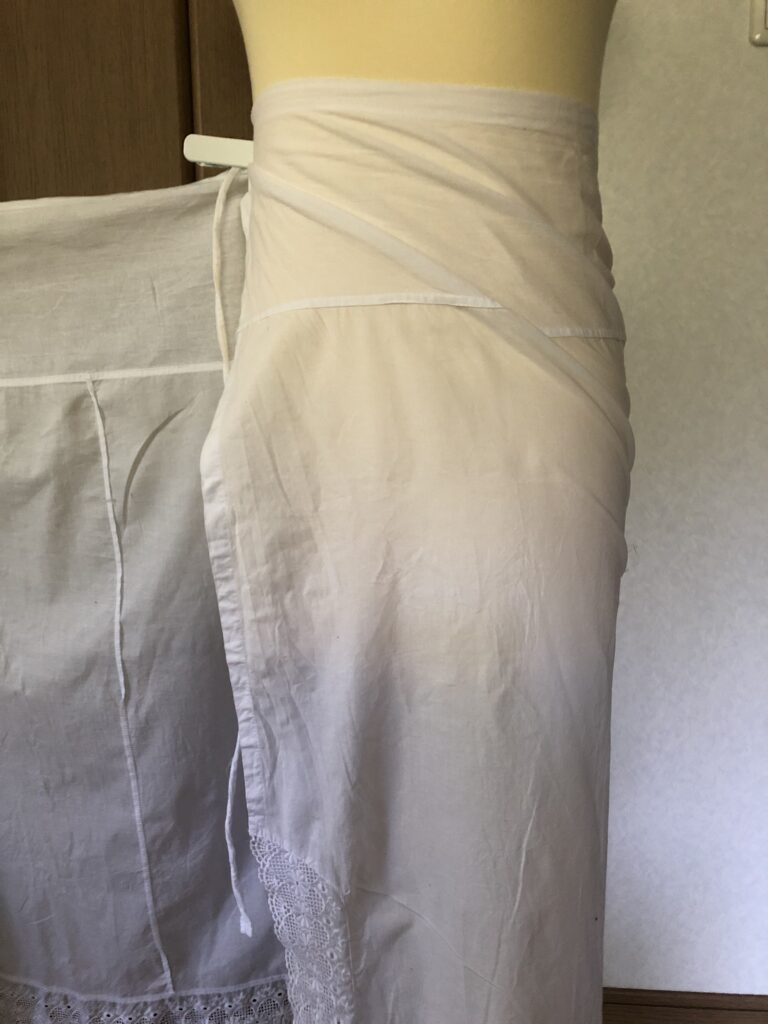
上前(左手)を腰骨から離して、下前(右手)を左腰骨の方へ持っていきます。最後の端の部分だけ5㎝ほど上
げます。
Once positioned, take the cloth at the right end to the left hipbone. Raise the edge about 5 cm up.
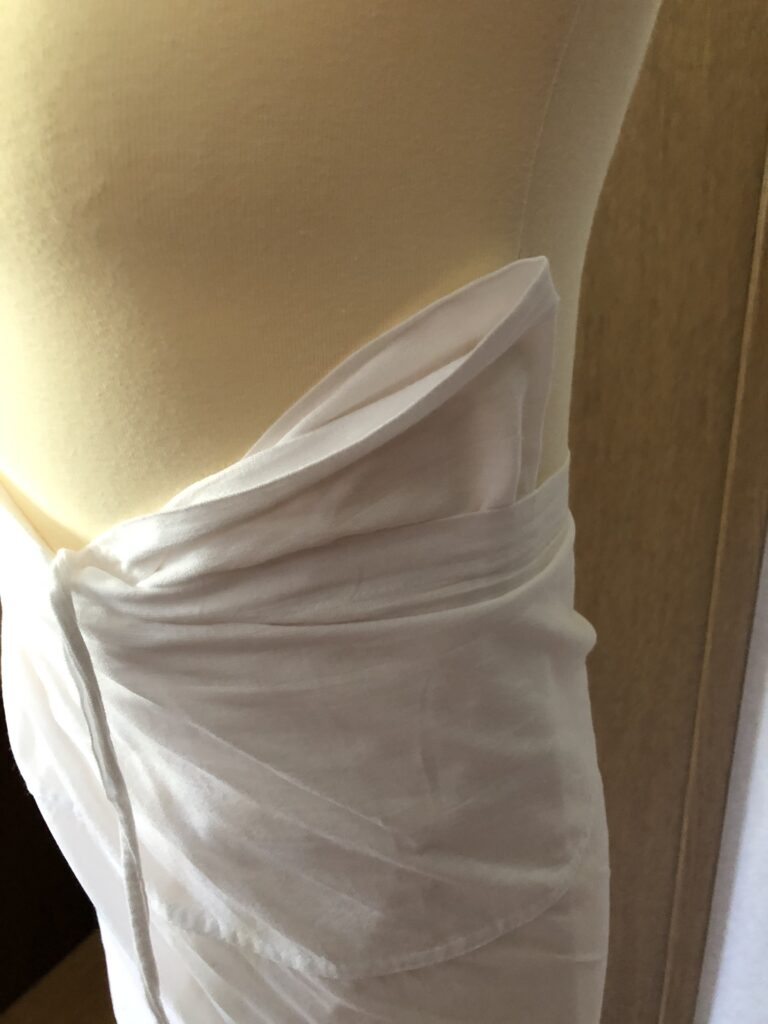
※裾よけが長い場合はこのように折り返した方が良いです。あまり後ろまで布がいくと、布が絡んで足さばきが悪くなります。
※If the cloth is long , please do it like this. If you do that, your feel and cloth wont not get tangled.
上前(左手)を右腰骨に持っていって最後の端を5㎝上げます。
Take the cloth on the left end to the first position. Raise the end about 5 cm up.
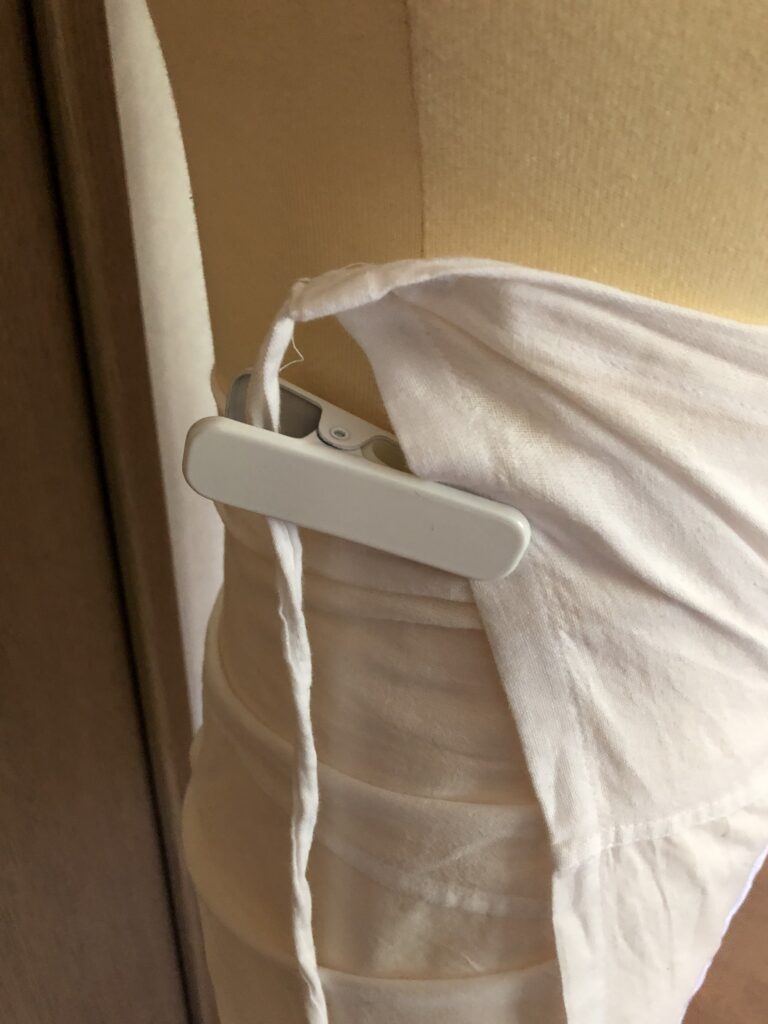
両端5㎝上げた部分が三角形に飛び出しています。その部分を下におります。
Fold both ends down.
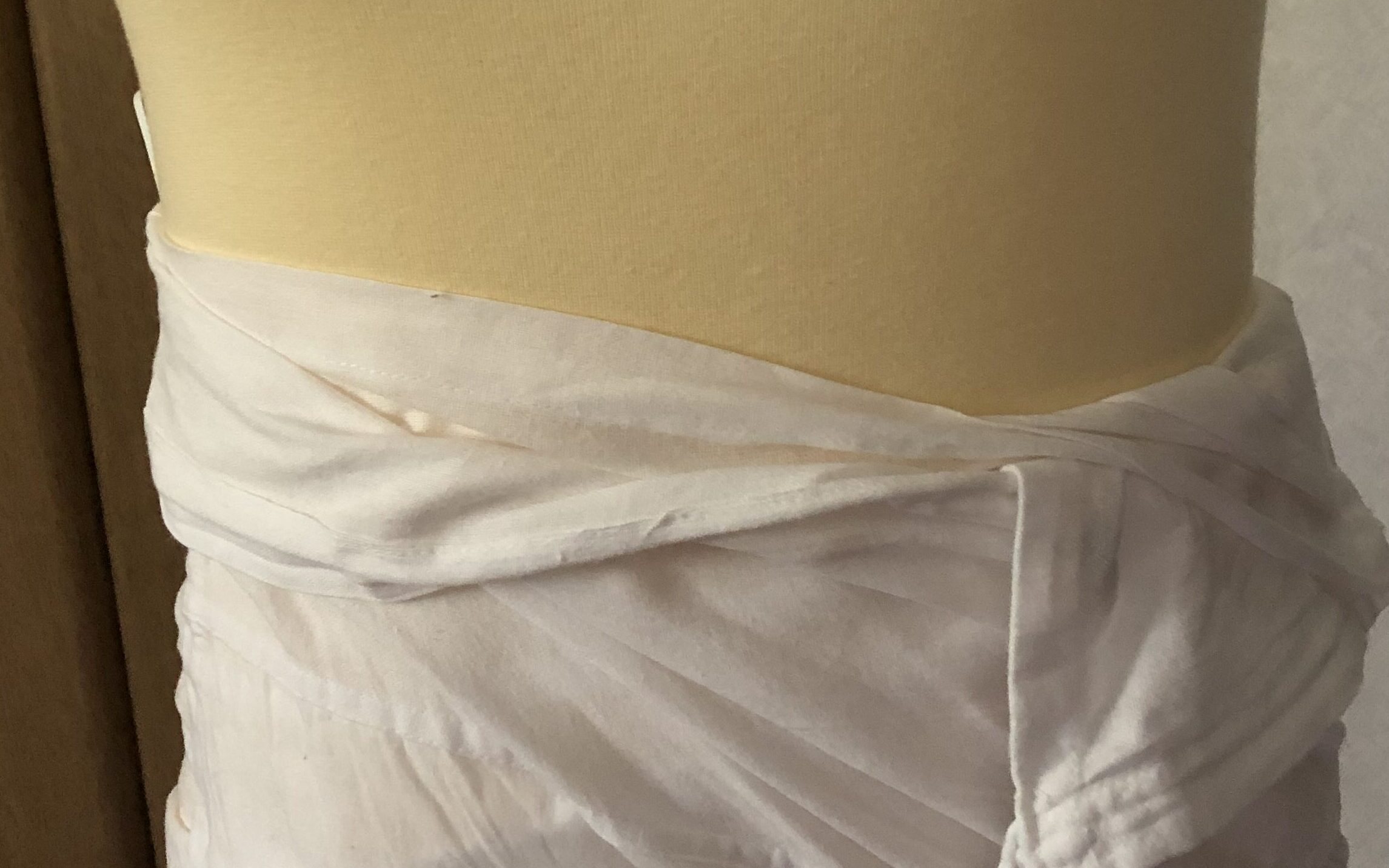
紐を体一周させて、蝶々結びまたは、紐同士を2回くぐらせて反対に持っていって紐の端を紐にくぐらせてとま
す。
The string goes around the body, and tie in a bow or wrap the string twice, twist the wrap part.
(後ろです back)
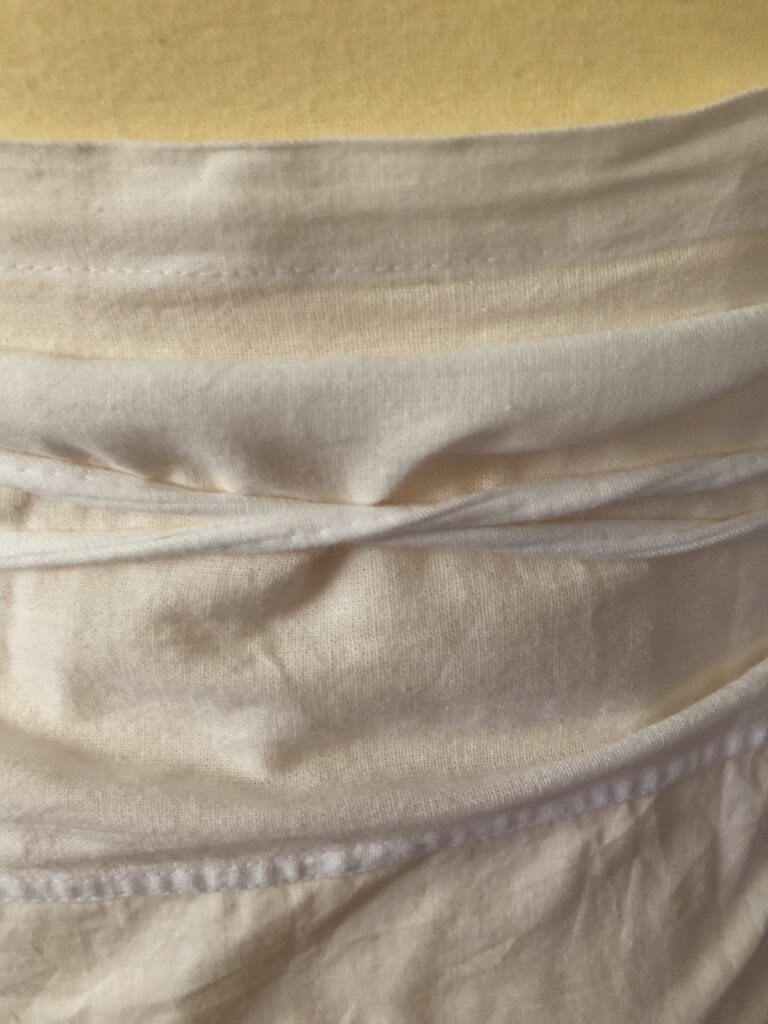
(前です。 front 1回目紐くぐらせ。)
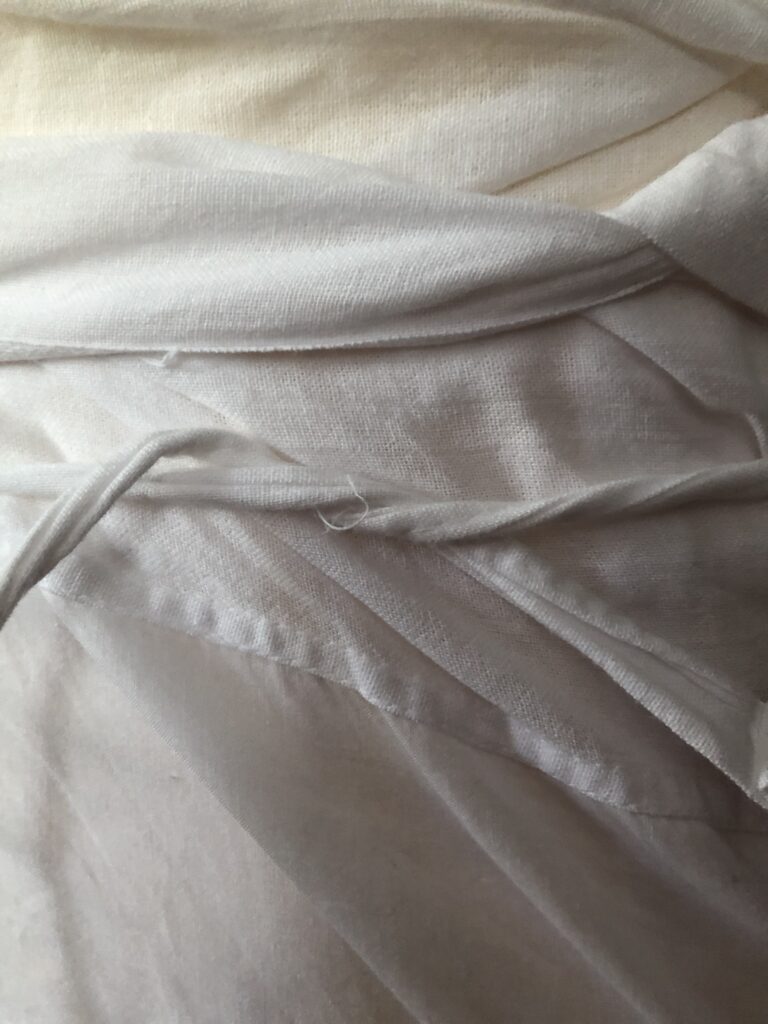
(2回目紐くぐらせ。)
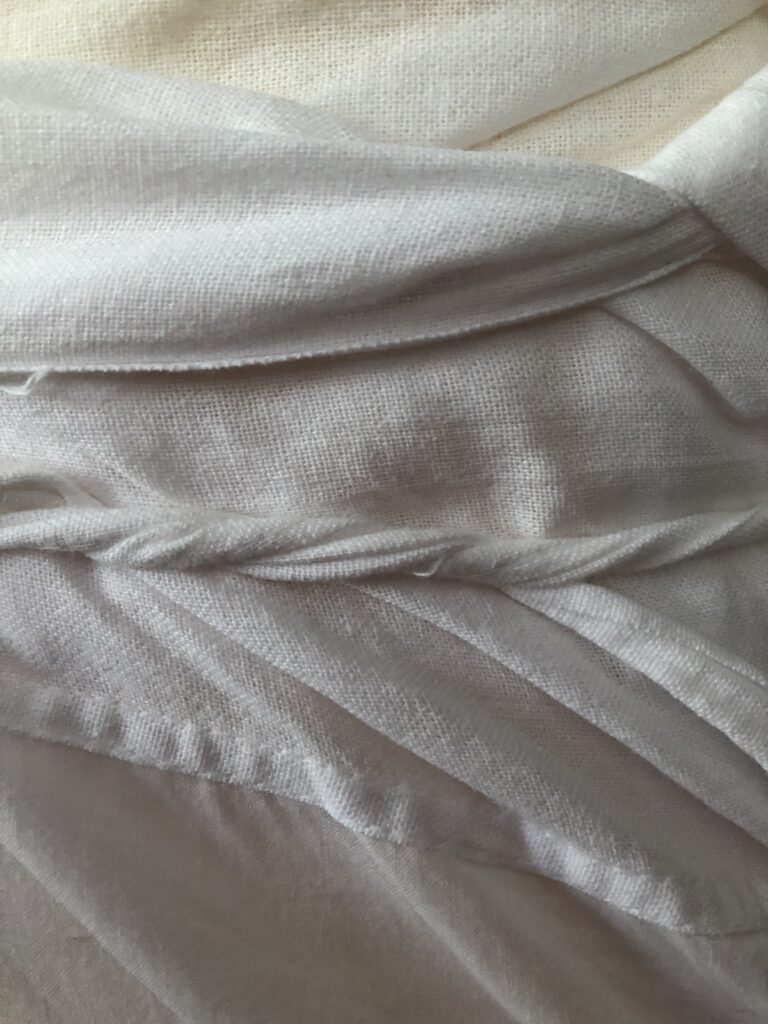
(反対に持っていく途中の状態。)
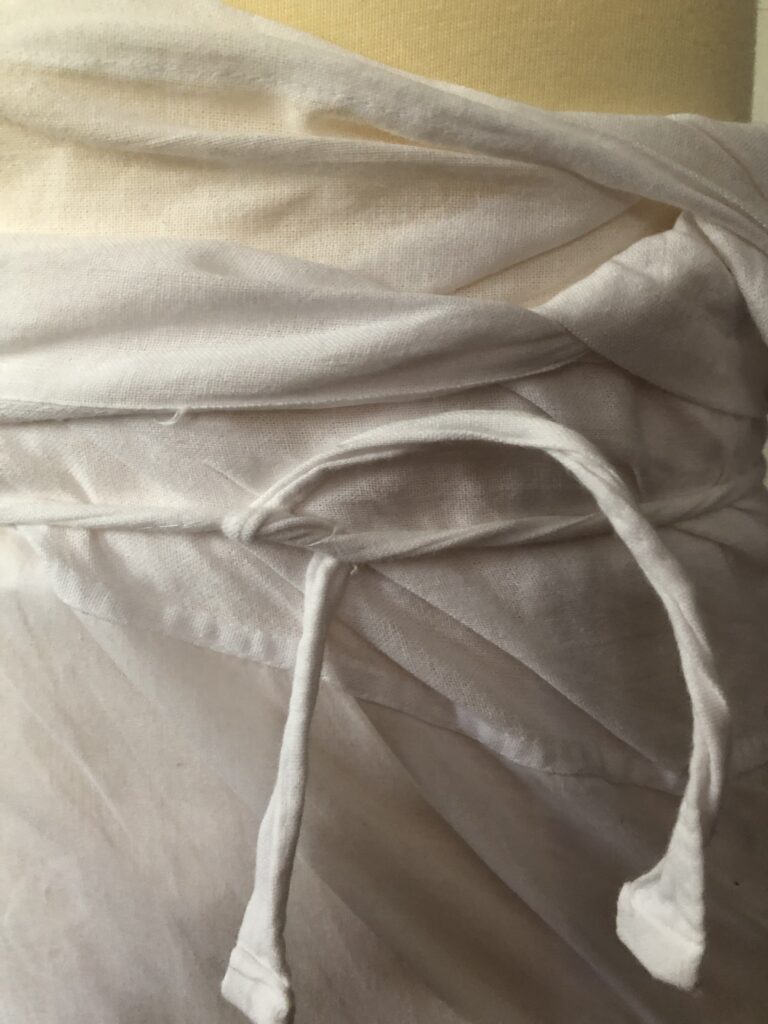
(紐の端2回ほどくぐらせます。)
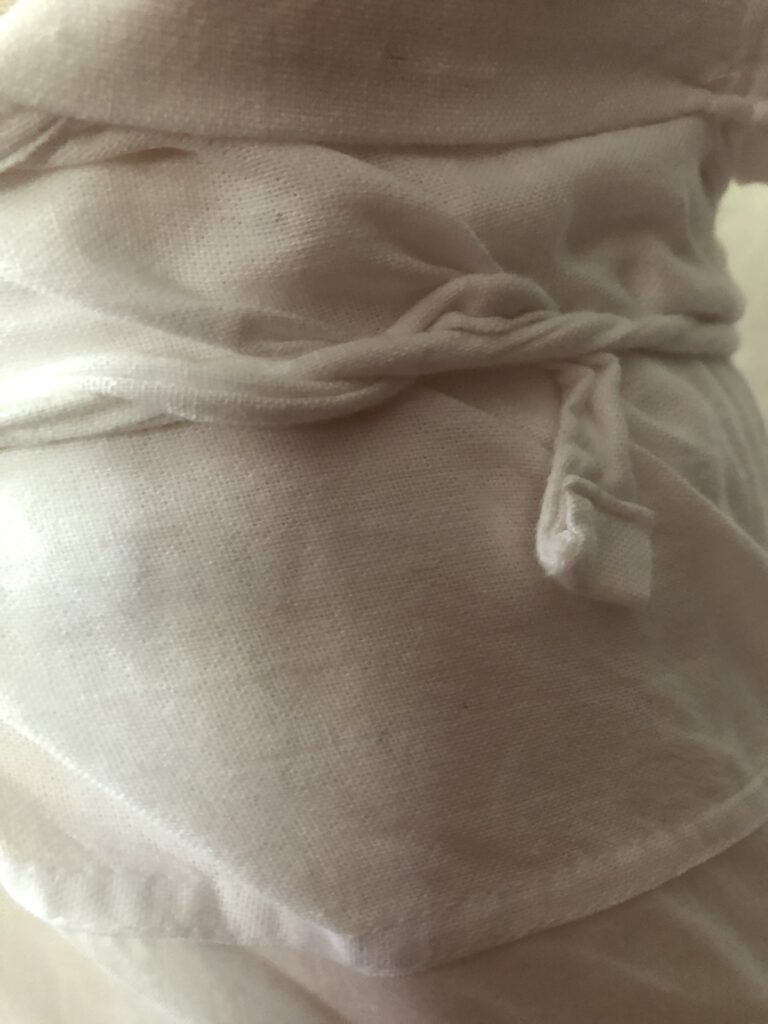
両端5㎝上げた分裾が下に向かって細くなります。(裾すぼまり)
It gets smaller toward the hem.
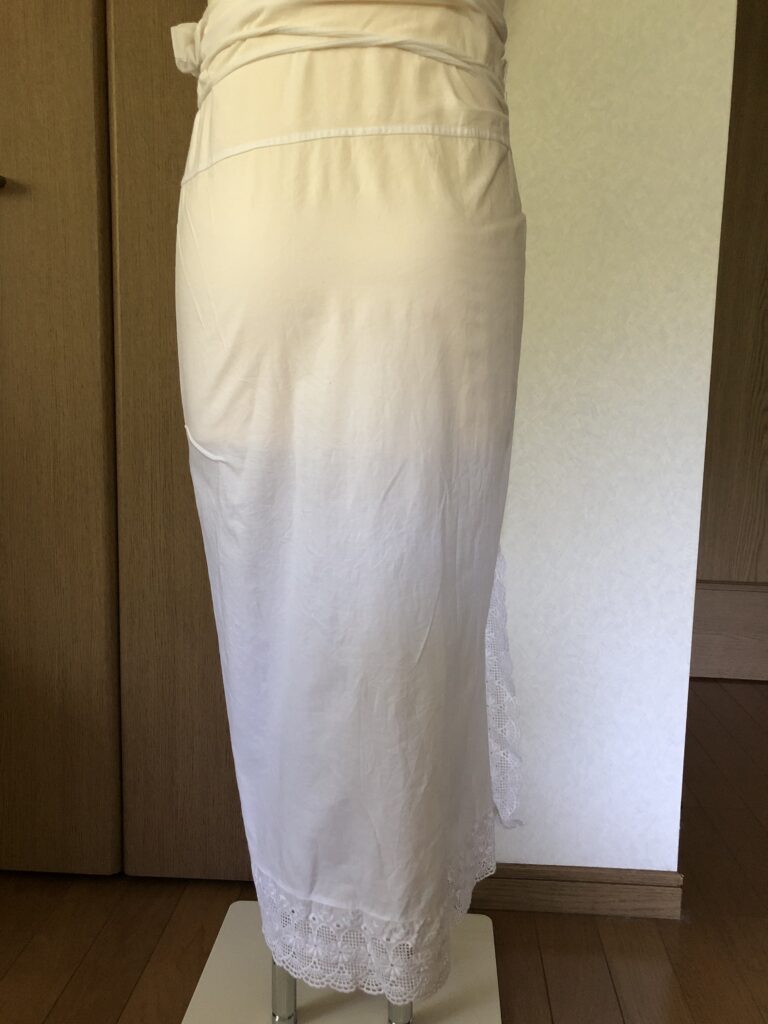
肌襦袢 Hadajyuban
袖を通します。
To wear.
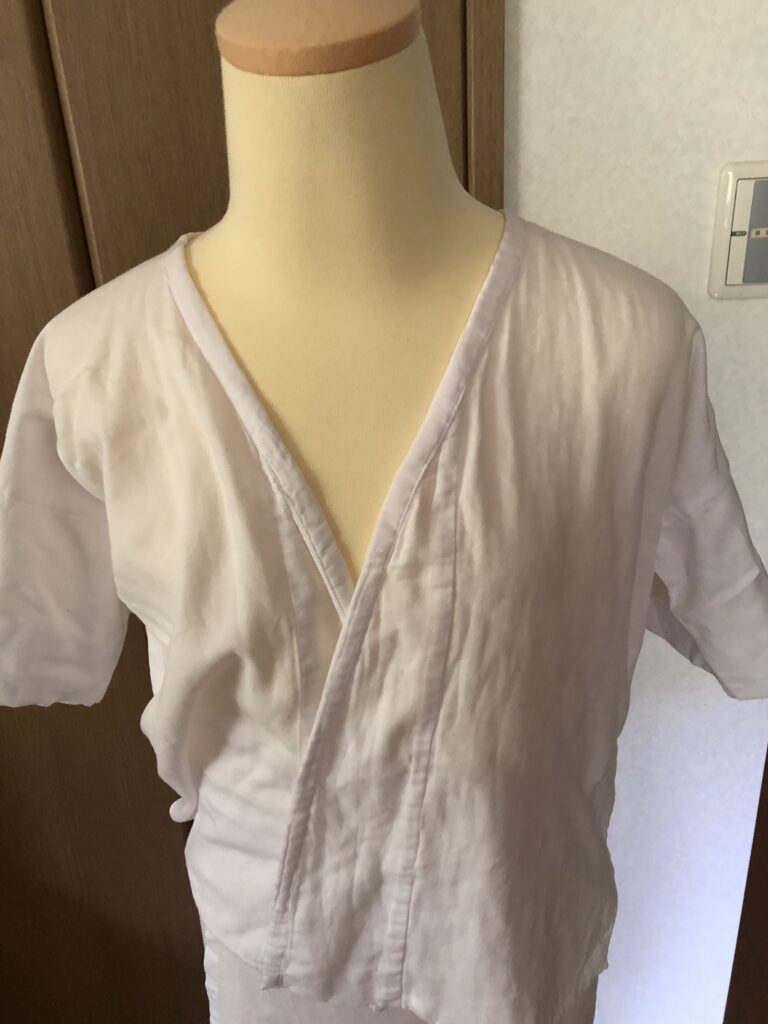
衣紋(首の後ろ)しっかりぬきます。
Open the back of your neck tightly.
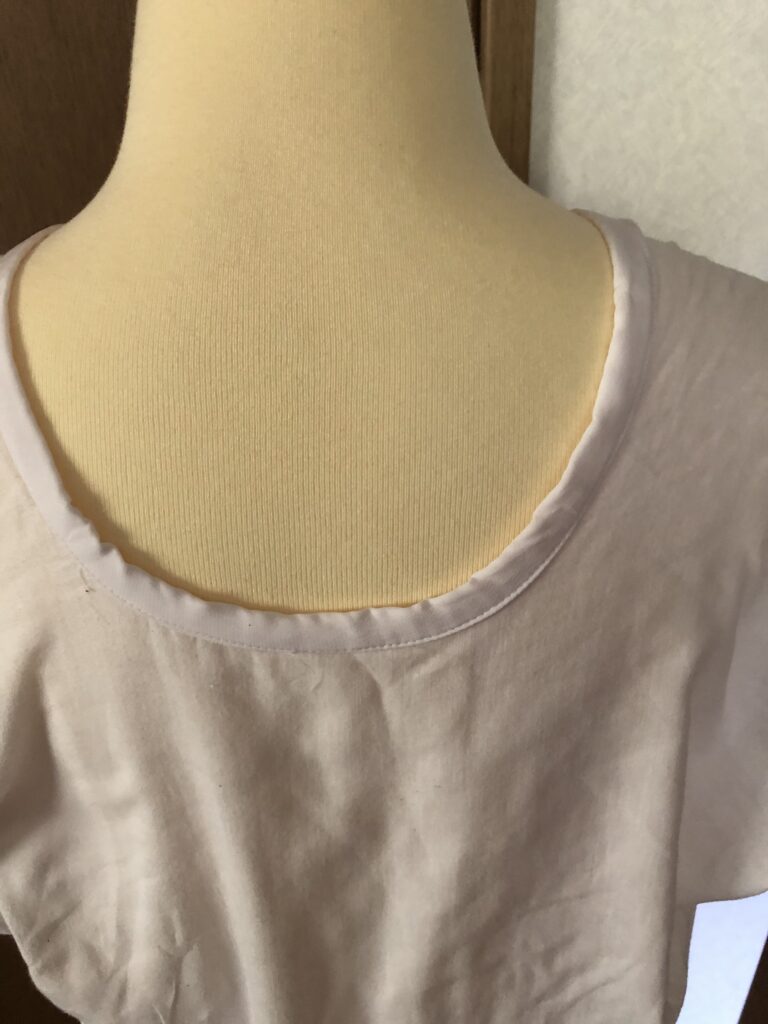
前はゆるやかにあわせます。
The front of the cloth is loose.
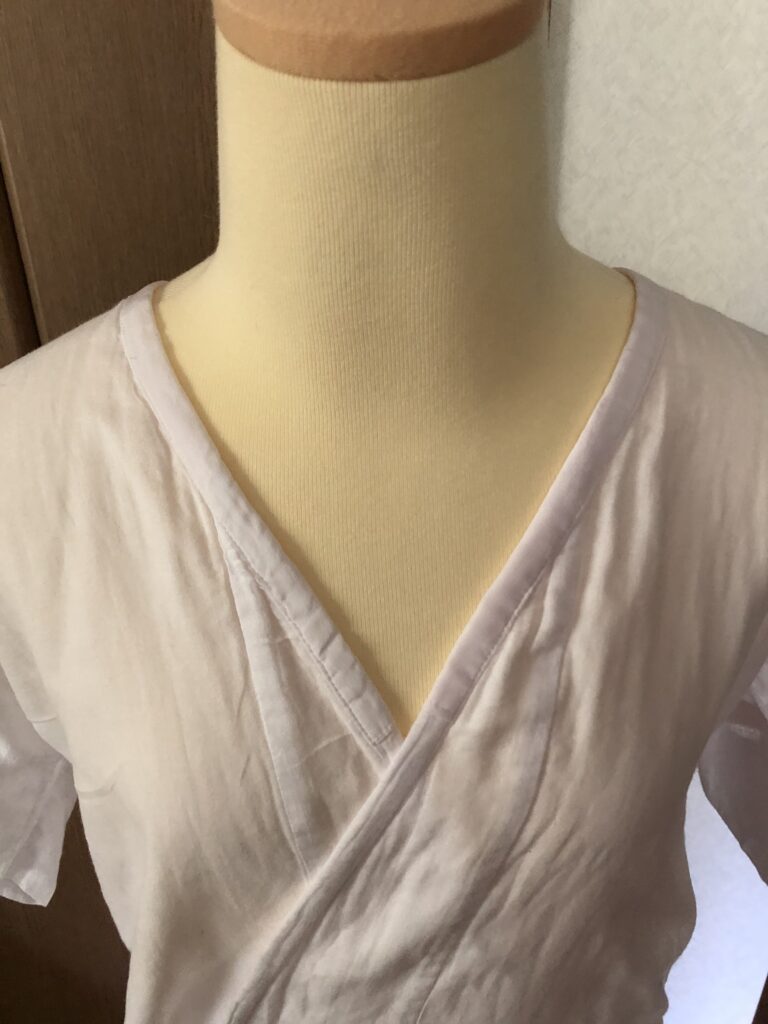
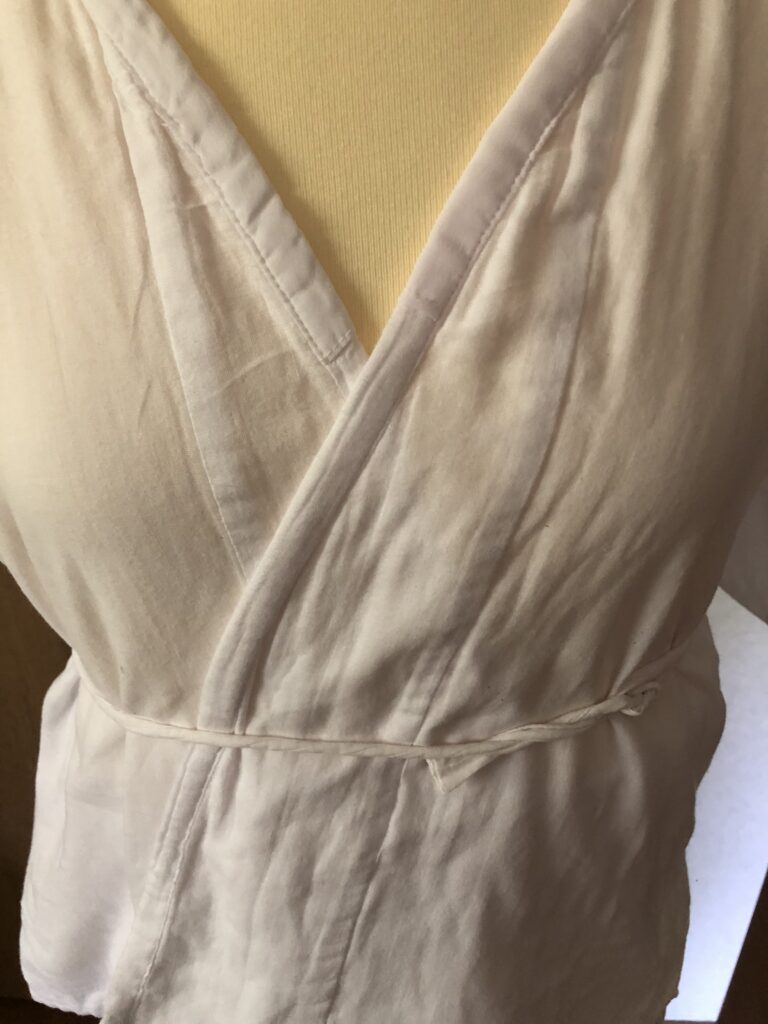
(紐があるなら結んでくださいね。苦しくないように、ゆったり結んで大丈夫です。)
(Let’s tie the string so that it dose not pain)
衣紋、えりあわせから見えないならOK。
It is OK if you can wear it so that you can not see it from the outside.
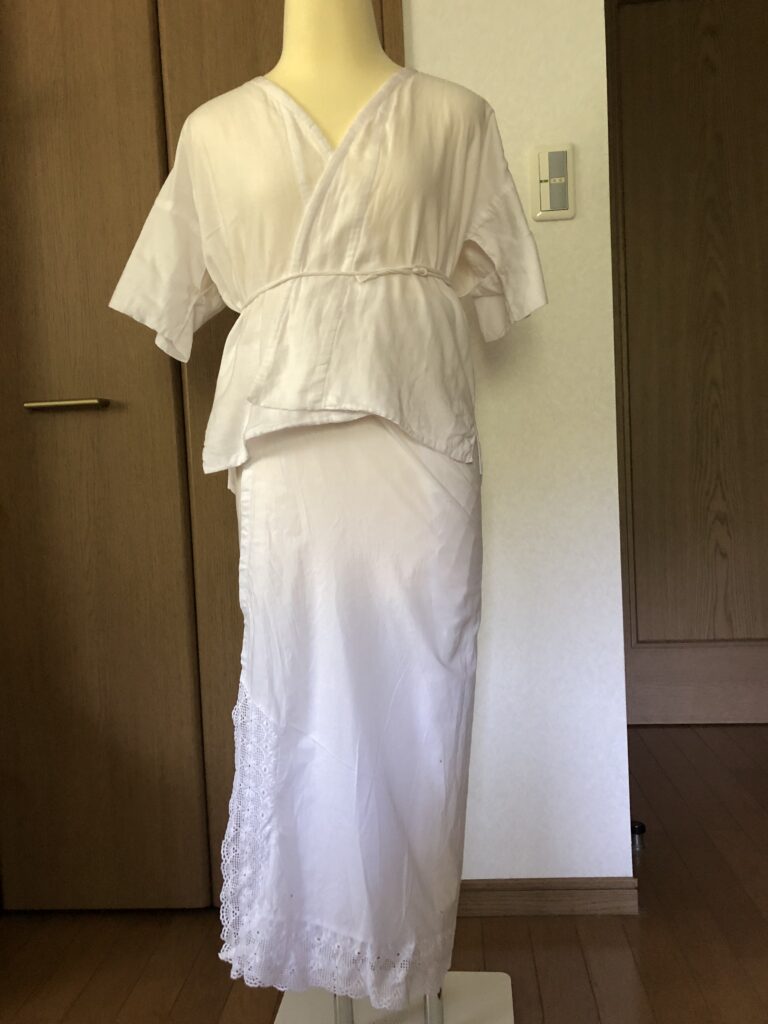
この状態の時に補正をしますが、補正については別の時に
Maybe I will make a hosei(補正). I will take about the hosei(補正).
浴衣の時 Be careful when wearing a yukata
半襟が見えないような着方をする時は、長襦袢を着ません。浴衣は比較的こちらの着方になることが多いでしょう。
その時肌襦袢や裾よけがとても大事です。前から見ると上前と下前2枚の布が重なるので、大丈夫です。ですが、浴衣の後ろは布が一枚です。(浴衣などは敷居あてなどついてるものもあります)
そうなると、下着の形や色がででしまうこともあります。お出かけ前にどんな感じかなあと鏡の前で座ったりいろいろ動いたりして、チェックしてみてくださいね。
Yukata are worn relatively often without magajyuban(長襦袢).
There is only one piece of cloth behind the yukata. So even if it is hot, please wear hadajyuban and susoyoke, etc. ( Some yukata have sikiiate( 敷居あて)).
Please check in front of the mirror to see if you can your under wear before you go out. If you can not see your underwear, it is okey.
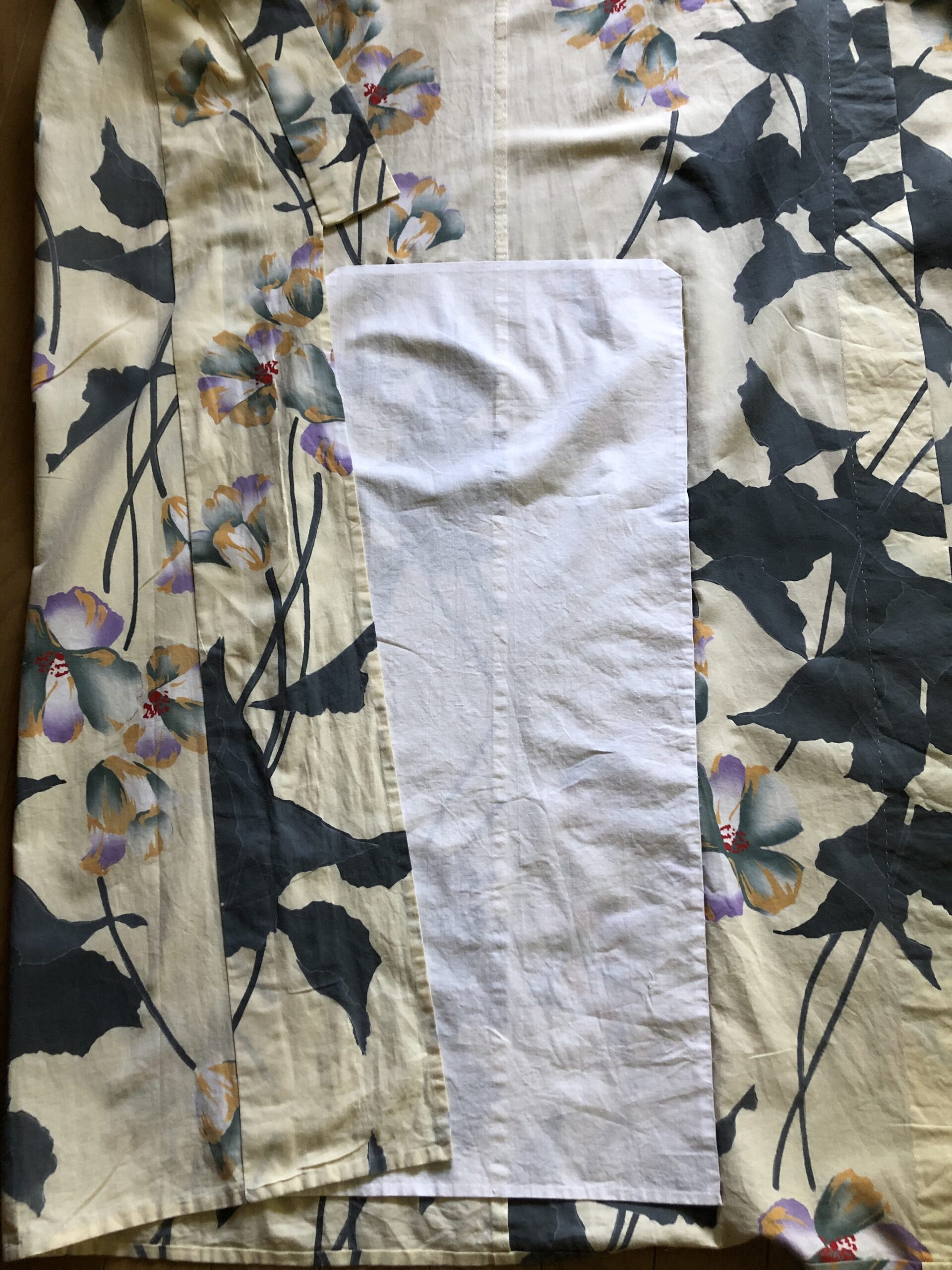
(白い所が敷居あて)
(The white part is sikiiate(敷居あて)).
最後まで読んでいただきありがとうございました。
I am sorry for poor English.
Thank you for reading through to end.
